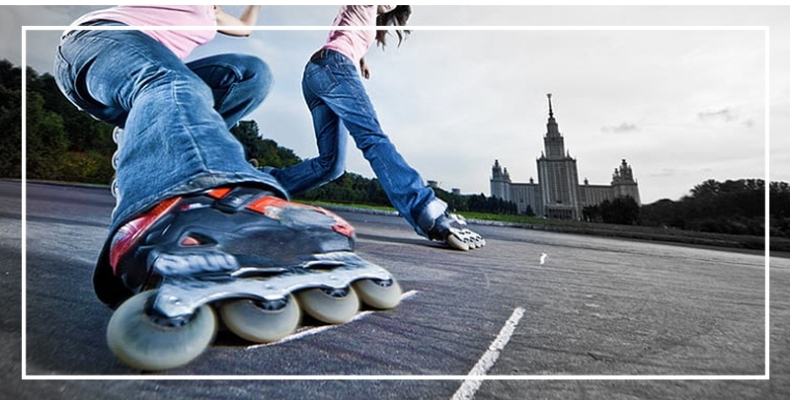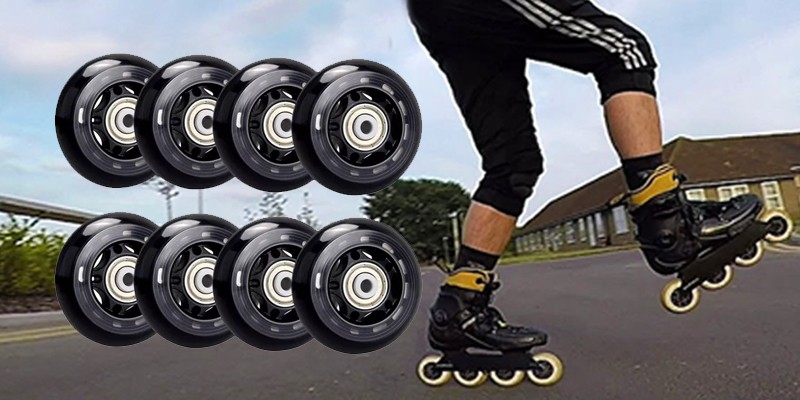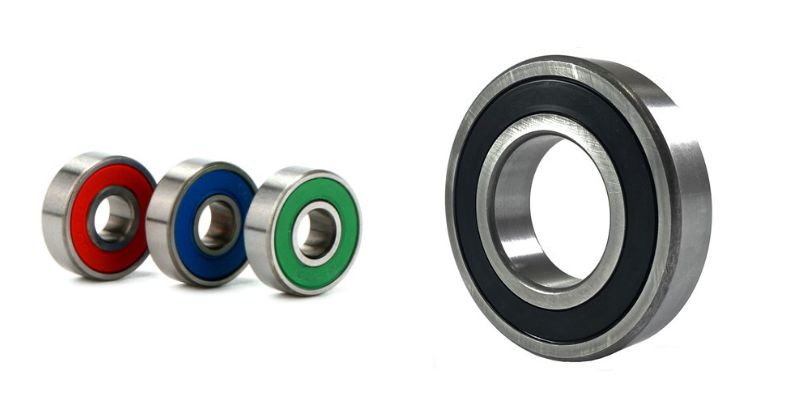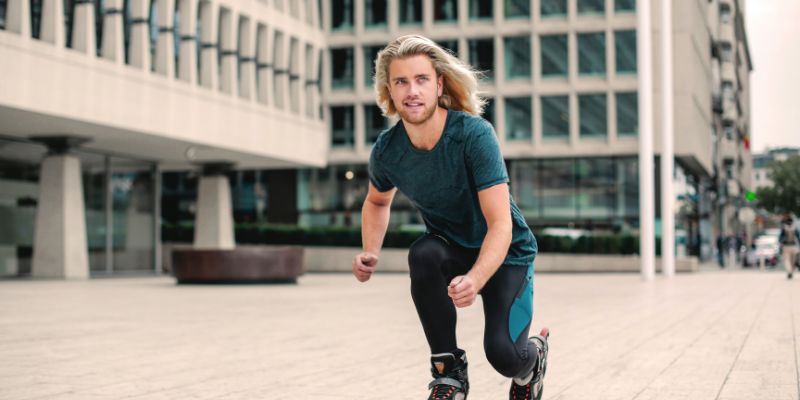Skating is a great way to exercise and have fun. It’s also a great way to get around. But how fast can you skate? It turns out that the answer depends on many different factors. The speed of skating is affected by the skater’s skill, the type of skating surface, weather, and more.

In this article, we’ll take a look at some of the factors that affect inline skating speed and give you an idea of the average speed under different conditions. If you feel the need for speed, read on!
The Biggest Factor That Determines Speed Is You
There are different types of skating, each with its own speed limits. For instance, racing skaters can go much faster than those skating for recreation or transportation.
The type of skate also makes a difference. Inline skates are built for speed whereas quad skates—the kind with two wheels in front and two in back—are not.
However, the skates themselves are only a part of the equation.

When it comes to skating speed, the biggest factor is the skater. Some people are just naturally faster than others due to a variety of factors, including genetics, body type, and physical fitness. But with enough experience and practice, anybody can become a competitive speed skater.
If you’re new to inline skating, your average speed won’t be very fast at first. It takes time to learn how to balance on inline skates and push off with your feet. Once you get the hang of it, your average speed will start to climb.
Nobody starts out on inline skates as a speed demon, so don’t be discouraged if your average speed isn’t as fast as you’d like at first. Just keep practicing and you’ll get there in no time!
Why Skate Configurations Matter
If you want to maximize your skating speeds, you first have to understand the different wheel arrangements and skate configurations.
The traditional quad skates have two wheels in the front and two in the back, while inline skates have all wheels in a line. The wheel arrangement affects maximum speed because it determines how easy it is to push off the ground and how much friction you’ll experience while skating.
Quad skates generate more power with each push, but they also have to contend with more friction from the four contact points with the ground.
Inline skaters, on the other hand, can reach higher speeds more easily because they have less friction, but they may not be able to generate as much power.
Ultimately, it’s up to the skater to decide which wheel arrangement is best for them, based on their skating goals and abilities.
How Your Skate Wheels Affect Speed
The size of the wheel on inline skates has a direct impact on maximum speed. Plus, roller skate wheels are made of different materials that can affect a skater’s speed. How hard a wheel is will largely affect how fast you can go while inline skating. A harder wheel will have less friction and roll faster, while a softer wheel will provide more grip and traction but slow the skater down.
In general, larger wheels will allow for higher speeds, while smaller wheels will result in lower speeds. This is because larger wheels have a greater circumference, which means they cover more ground per revolution than smaller wheels. As a result, skaters can maintain their momentum for longer periods of time with larger wheels.

Additionally, larger wheels also offer a smoother ride, as they are better able to absorb bumps and other imperfections on the skating surface. For these reasons, larger wheels are usually used for speed skates.
The hardness of a wheel is measured on the durometer scale, with harder wheels typically being better for speed skating and softer wheels being better for traction and control. Softer wheels are also more likely to wear down quickly, so they may need to be replaced more often.
As a result, many skaters prefer to use wheels made of softer materials for everyday skating, and reserve the harder, more slippery materials for speed skating or racing.
Bearings Are Important
Bearings might not be the first thing you think about when you strap on your inline skates, but they have a big impact on your inline skate experience. The bearings are the small metal balls that sit between the axle and the wheel, and they allow the wheels of an inline skate to rotate smoothly.
Bearings are classified by the ABEC standard, which is recognized worldwide in the industry. The ABEC system rates how good bearings are at converting force into movement. The higher ABEC classes improve precision, efficiency, and speed, regardless of whether or not the components spin faster. The precision of spacers and wheels isn’t affected by ABEC ratings.

The lower the ABEC class, the less precise the bearing is, and the more likely it is to produce vibration. Higher classes are more expensive because they require tighter manufacturing tolerances. Class 1 bearings are the lowest quality, while class 9 bearings are the highest quality. Most skaters use middle-range bearings, such as class 5 or class 7.
The type of bearing you choose will affect your skating speed and maneuverability, so it’s important to choose the right one for your skating style.
Skating Surface Plays a Big Role in Determining Speed
We’ve looked at the skates and the skater, but what about the skating environment itself? Different surfaces have unique properties that can affect the speed, traction, and turning of inline skates.
One of the most popular surfaces for inline skating is concrete. Concrete is very hard, which provides a smooth and fast surface for inline skating. However, it can also be slippery when wet, making it difficult to stop or turn quickly. As a result, many inline speed skaters prefer to skate on concrete only when they are experienced and confident in their roller skating abilities.

Another popular surface for inline skating is asphalt. Asphalt is similar to concrete in that it is hard and smooth, but it generally has more grip than concrete, making it easier for inline skaters to stop and turn. Asphalt is also less likely to get slippery when wet, making it a good choice for roller skating in all weather conditions. However, asphalt can also be quite bumpy, which can make skating less enjoyable for some inline skaters.
Hardwood floors are the best and most popular surface for roller skating. Wood surfaces are usually very smooth, making them ideal for speed skating. However, they can also be much more slippery than other surfaces, making them more difficult to skate on. Wood surfaces may be more difficult to find for inline skaters. Many roller rinks will not allow inline skates because the wheels are composed of a different material than roller skates, which leads to concerns about damaging the wood surface of the rink.
No matter what type of surface you choose to inline skate on, be sure to take the time to practice and become comfortable with your skating abilities before attempting high speeds. Skating on a new or unfamiliar surface can be dangerous, so it’s always better to err on the side of caution.
If You Want to Go Really Fast, Use a Hill
The slope is an important factor to consider when roller skating, as it can affect both speed and safety. A steeper hill will make you go faster, but it will also be more difficult to stop or control your speed. By contrast, a gentle slope will allow you to skate at a slower pace and is less likely to cause you to lose control.
When skating on a hill, it is important to be aware of your surroundings and skate down the hill in a controlled manner. If you start to feel like you are going too fast, use your heel brakes or toe-stops to slow down. Practice these skills thoroughly before putting them to use in a fast, downhill environment.
When roller skating, always be mindful of hills and how they can affect your speed. Skating on hills is tricky and isn’t recommended for beginners.
Techniques to Achieve a High-Speed
Achieving the highest possible speed on speed skates requires using proper technique and having the right equipment.
First, it is important to maintain a low stance with the majority of your weight over your skating leg. This will help you to keep your center of gravity low, which will increase your stability and allow you to skate faster.
Next, you need to push off with your skating leg while keeping your other leg extended behind you. This will help you to generate more power and speed. Also, it is important to tuck your arms in close to your body and keep your head up. This will help you to streamline your body and reduce wind resistance.
By following these tips, you can maximize your speed and skating performance.
Stopping is Just as Important as Starting
When you are skating on your inline or quad skates, it is important to know how to stop. If you are going too fast, you could lose control and fall, which could lead to injury.
There are two main ways to stop when you are skating – the heel brake and the toe stop.
The heel brake is the most common way to stop and it is done by simply dragging your heel on the ground. To do this, lean back slightly and raise your heel so that it is above the ground. Then, apply pressure to the heel brake until you slow down and come to a stop.
The toe stop is another way to stop, but it is not as common as the heel brake. To do the toe stop, you will need to have a toe stop on your skate. To use it, simply lift your toe and press down on the toe stop.
Using either one of these methods, you can stop safely and effectively when skating.
With Great Speed Comes Great Responsibility
Even though going fast is a lot of fun, it is important to be safe and responsible when inline speed skating at high speeds. Here are a few tips to help you stay safe when you’re skating fast.
Tip #1. Wear the Proper Gear
Make sure you have the right shoes for skating, and that they fit properly. You should also wear knee pads, elbow pads, and a helmet to protect yourself in case of falls.
Tip #2. Be Aware of Your Surroundings
When you’re skating quickly, you won’t be able to stop as quickly as you can when you’re walking or running. Pay attention to what’s in front of you so you can avoid obstacles, and be aware of other skaters around you so you don’t collide with them.
Tip #3. Skate in Low-Traffic Areas
If possible, skate in areas where there aren’t a lot of people or cars. This will help reduce the risk of collisions.
Tip #4. Follow the Rules of the Road
If you’re skating outdoors, follow the same rules as if you were driving a car – skate on the right side of the road, obey traffic signals, and yield to oncoming traffic.
By following these safety tips, you can help ensure that you have a safe and enjoyable experience when skating at high speeds.
Go, Go Speed Racer!
Even with all of the different techniques and safety tips, nothing can prepare you for the sheer joy of skating at high speeds. When you’re skating fast, it feels like you’re flying – the wind rushing past you, the ground a blur beneath your feet. It’s an exhilarating feeling and one that you’ll never forget.
Now, it’s time to use the techniques and tips that you have learned, it’s time to put them into practice and see how fast you can go on your roller skates! Remember to always skate safely and be aware of your surroundings. With a little practice, you’ll be flying on your skates in no time.

Most articles about rollerblading suggest a helmet for safety. Others, like this one, also suggest elbow and knee pads. I rollerbladed for years and took plenty of “spills”, and the reality is, at least for me and others I rollerbladed with, is when we took a spill, we always fall forward and put our hands out in front of us to break our fall. I’ve seen a few others fall on their butt. However, the part of the body that is almost invariably injured when unprotected is the hands and wrists.